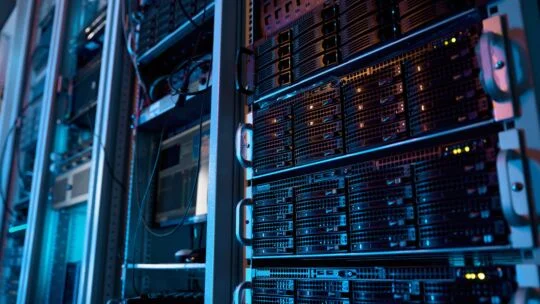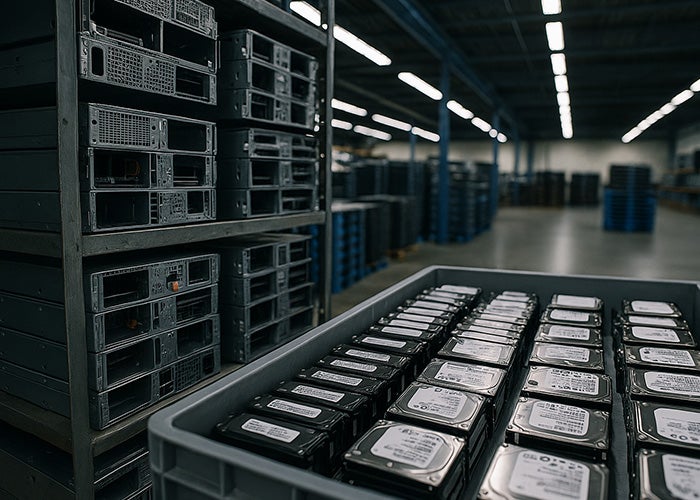Creciente demanda de servicios de ciclo de vida de extremo a extremo, desde el abastecimiento hasta la circularidad
Los operadores de centros de datos se enfrentan a retos cada vez más complejos y en constante evolución. gestión de cadena de suministro, tecnología y panoramas regulatorios. Cada operador tiene su propia perspectiva y estrategia sobre cómo diseña, obtiene, construye, entrega y gestiona a lo largo del ciclo de vida de su producto, lo que puede incluir productos internos, como procesadores personalizados, y nuevas instancias de nube entregadas a través de la infraestructura. Independientemente de si una empresa decide internalizar o externalizar, la flexibilidad es un factor importante a la hora de interactuar con el ecosistema en cada etapa del ciclo de vida del producto.
La flexibilidad en el diseño es esencial. Algunas empresas priorizan la personalización, mientras que otras utilizan diseños de referencia de estándares de la industria, como... Open Rack v3 especificaciones como las del Proyecto Open Compute (OCP), o realizar ligeros ajustes a estos diseños.
Este ejemplo destaca el valor de los ecosistemas de fabricación regionalizados para las empresas que buscan agilidad y resiliencia en la cadena de suministro. La proximidad a los mercados finales alinea la producción con las señales de demanda, facilitando productos a medida para las necesidades locales y los objetivos de sostenibilidad. Para los operadores de centros de datos, esto garantiza la entrega puntual de la infraestructura de TI, energía y refrigeración con la configuración especificada. Además, posicionar los sistemas para componentes de alta demanda, como las GPU, en las últimas etapas del proceso, mejora la flexibilidad y la capacidad de respuesta en entornos de suministro limitado.
Ubicar las instalaciones de fabricación y servicio cerca de la demanda reduce los riesgos y las complejidades asociados con las regulaciones comerciales, los aranceles, los cambios geopolíticos y las interrupciones en la cadena de suministro. Por ejemplo, la integración vertical de los racks de los centros de datos incluye la fabricación de chapa metálica, el montaje de los racks y las pruebas de las capacidades de computación, almacenamiento, redes, módulos de alimentación y refrigeración líquida en una sola ubicación. Sin la integración vertical, el tiempo y el coste totales, incluidos los aranceles, necesarios para embalar y enviar individualmente cada uno de estos componentes clave a los centros de datos igualarían o superarían el coste del propio rack, además de generar 90 kg adicionales de residuos de embalaje por rack.
Aproveche el análisis, la inteligencia artificial y la visualización a lo largo del ciclo de vida.
En Flex, equilibramos flexibilidad, precisión y control mediante datos, análisis, IA y automatización. Los profesionales de TI comprenden cómo se aplica esta inteligencia a la gestión de servidores para el mantenimiento predictivo, la resolución de problemas, la asignación de recursos, el balanceo de carga y la optimización energética. Existen beneficios similares en la cadena de suministro.
Integración del ciclo de vida del producto para afrontar los desafíos de los centros de datos modernos
Los hiperescaladores se enfrentan a retos únicos al actualizar sus centros de datos y construir nuevos para mantener su ventaja competitiva. Estos retos incluyen la rápida iteración de productos para sistemas personalizados y la alta demanda en diferentes regiones. Creemos que la integración de soluciones avanzadas de fabricación, energía y refrigeración con servicios de ciclo de vida equilibra de forma óptima el control y la optimización.
La experiencia de Flex nos permite analizar la infraestructura en sus áreas de computación, almacenamiento, red, energía y refrigeración, proponiendo soluciones que equilibran el costo, la resiliencia y el impacto ambiental. Al integrar el diseño, el abastecimiento, fabricación, entrega y servicio, los hiperescaladores pueden reducir la fricción, acelerar la entrega y maximizar la inversión.







